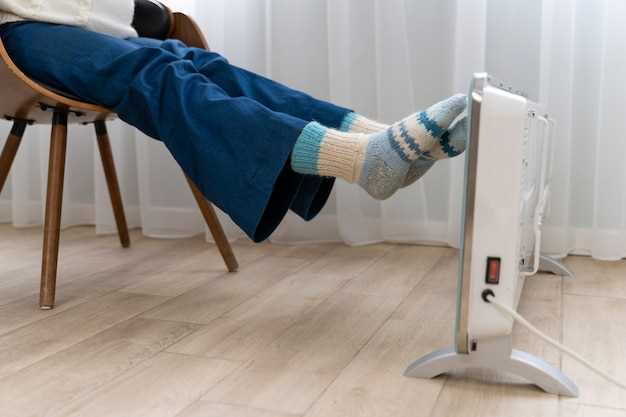

Winter brings a host of challenges, and one of the most significant is ensuring that your heating system operates efficiently to keep your cabin warm and comfortable. As temperatures plummet, the demand for heat increases, which puts added stress on your heater. Understanding the core reasons for heater failure during these chilly months can help you take proactive measures to avoid the discomfort of an unexpected breakdown.
Several factors can contribute to heater malfunction, ranging from technical issues to environmental stressors. Being aware of these potential pitfalls allows homeowners to prepare adequately and maintain a reliable source of heat. Regular maintenance and timely interventions become crucial in ensuring that your heating system operates smoothly throughout the winter.
This article will explore the top reasons for heater failure during winter, highlighting the importance of proper care and attention to keep your system performing at its best. By identifying these common issues, you can take steps to safeguard your home against the cold.
Common Causes of Cabin Heat Loss in Vehicles
One significant cause of cabin heat loss is a malfunctioning heater core. The heater core acts as a small radiator, transferring heat from the engine coolant to the cabin air. If it develops leaks or clogs, heat cannot efficiently circulate, leading to a cold cabin.
Another issue is the presence of drafty windows and doors. Worn seals or damaged weather stripping around windows can allow cold air to enter, effectively pulling heat out of the cabin. This makes it difficult for the heater to maintain a comfortable temperature.
The thermostat is also crucial for regulating cabin heat. If it becomes stuck open, it allows too much coolant to flow through the engine, which means the engine may not reach optimal temperatures. This directly impacts the heat output of the heater, resulting in insufficient warm air in the cabin.
A poorly functioning blower motor can further exacerbate heat loss. The blower motor is responsible for distributing warm air throughout the vehicle. If it malfunctions, airflow can be weak or nonexistent, leaving passengers in a chilly environment even when the heater is operational.
Lastly, insufficient engine coolant levels can also lead to heat loss. Low coolant reduces the heater core’s ability to absorb heat, thus delivering less warmth to the cabin. Regular maintenance checks can help ensure coolant levels remain adequate, promoting optimal heater performance.
Identifying Issues with the Heater Core

The heater core is a vital component of your vehicle’s heating system, responsible for transferring heat to the cabin. Recognizing problems with the heater core early on can prevent further issues and maintain effective heat distribution during winter months.
Here are some common signs that indicate issues with the heater core:
- Inadequate Heating: If the cabin fails to warm up efficiently, it may indicate a blockage or leak in the heater core.
- Coolant Leaks: Puddles of coolant inside the vehicle are a strong indication that the heater core is leaking.
- Unpleasant Odors: A sweet smell in the cabin can suggest that coolant is leaking from the heater core, leading to potential health risks.
- Foggy Windows: If the windshield fogs up quickly, it could be a sign that the heater core is leaking and introducing moisture into the cabin.
To investigate potential heater core issues, follow these steps:
- Check the coolant level in your vehicle’s reservoir; low levels may indicate a leak.
- Inspect for any visible coolant leaks under the dash or on the passenger side floor mats.
- Monitor the temperature gauge on the dashboard; fluctuations in temperature could suggest a failing heater core.
- Look for any unusual sounds from the heating system when turning it on; clunking or gurgling noises can signal air trapped in the system due to leaks.
Addressing heater core issues promptly is crucial for maintaining optimal heating efficiency and ensuring a comfortable environment inside the cabin during cold weather. If you suspect a problem, consider consulting a professional mechanic for a thorough inspection and necessary repairs.
Preventive Maintenance Tips for Winter Heating Systems

To ensure that your heating system operates efficiently throughout the winter months, it’s essential to implement preventive maintenance practices. One of the core aspects of this maintenance is regularly replacing or cleaning air filters. Clogged filters can restrict airflow, causing your system to work harder and potentially leading to breakdowns.
Another crucial step is to inspect the heating ducts for any leaks or blockages. Sealing gaps and ensuring proper insulation in your ductwork can significantly enhance heat distribution, keeping your cabin warm and comfortable without excessive energy expenditure.
Additionally, scheduling a professional inspection for your heating unit can help identify potential issues before they escalate. Technicians can assess the entire system, checking components such as the thermostat, heat exchanger, and blower motor. This thorough examination reduces the risk of unexpected failures during peak winter usage.
Moreover, consider keeping your thermostat set to a consistent temperature instead of making frequent adjustments. This stability can prevent unnecessary strain on the system and promote even heating throughout your space.
Lastly, remember to clear any obstructions around vents and radiators to ensure optimal airflow. Landscaping and furniture should not impede heat circulation, as they can lead to cold spots and forced overcompensation by your heating system.






